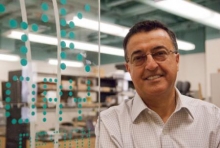MAE Seminar: Lessons for Bioinspired Design

Abstract: Oft posed is the question of who is the better technologist, Mother Nature or the human engineer. Mother Nature is the source, revealing herself in the amazing design of a bird’s wing, the human heart and spider silk. So, it is natural to try to mimic solutions that nature has developed to overcome challenges of sustaining life. However, many intriguing features of biological structures (e.g. form and function) do not reside entirely within their static/dynamic morphology of the endpoint design.In this respect, it is crucial to recognize the key difference between natural and human design is that natural design is based on multifunctional elements and systems capable of fulfilling their tasks as they grow. Therefore a better approach would be to notice and understand the underlying physics and engineering associated with nature’s design and more so by understanding how she manufactures them rather than looking at endpoint designs. In this lecture, we will discuss inspiring examples from the circulatory systems of mammals, fish propulsion and plants' structural dynamics to develop efficient devices ranging from micropumps for drug delivery to more resilient vertical windmills.
Bio: Mory Gharib is the Hans W. Liepmann Professor of Aeronautics and Bioinspired Engineering at Caltech, and he was recently appointed director of the Graduate Aerospace Laboratories, having just completed a six-year term as vice provost for research.
Gharib’s research interests in conventional fluid dynamics include vortex dynamics, active and passive flow control, micro fluid dynamics, bioinspired wind and hydro-energy harvesting, as well as advanced flow-imaging diagnostics. His biomechanics and medical engineering research include cardiovascular fluid dynamics, aquatic breathing/propulsion and development of medical devices such as heart valves, cardiovascular health monitoring and drug delivery systems.
Share
Upcoming Events
-
MSE 298 Seminar: Catalyst Design For Clean Energy Technologies
-
MAE 298 SEMINAR: Biomechanics of Rotator Cuff
-
CBE 298 Seminar: Micro- and Nanofluidic Systems for Molecular Biosensing, Nanotoxicity, and Optogenetics
-
MSE Special Seminar: Architecting 3D Complex Materials for Sustainability
-
MSE Special Seminar: Decarbonizing Industries for a Climate-resilient Future - From Renewable Energy to Sustainable Material Recovery
